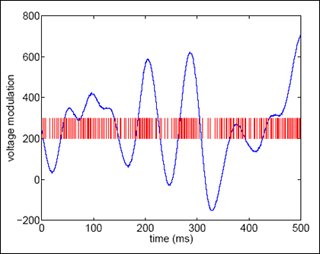Course Description
This course gives a mathematical introduction to neural coding and dynamics. Topics include convolution, correlation, linear systems, game theory, signal detection theory, probability theory, information theory, and reinforcement learning. Applications to neural coding, focusing on the visual system are covered, as …
This course gives a mathematical introduction to neural coding and dynamics. Topics include convolution, correlation, linear systems, game theory, signal detection theory, probability theory, information theory, and reinforcement learning. Applications to neural coding, focusing on the visual system are covered, as well as Hodgkin-Huxley and other related models of neural excitability, stochastic models of ion channels, cable theory, and models of synaptic transmission.
Visit the Seung Lab Web site.
Course Info
Instructor
Departments
Learning Resource Types









